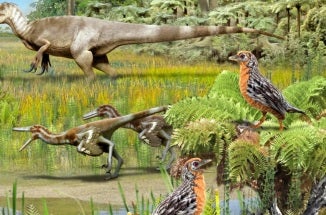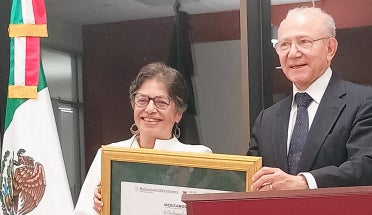
Dinosaur Fossils Reveal Biodiversity of Prehistoric Patagonia
- Jun 1, 2023
A study led by The University of Texas at Austin provides a glimpse at the biodiversity of dinosaur and bird populations in South America’s Patagonia region during the Late Cretaceous period.
The fossils are the first record of theropods — a dinosaur group comprising modern birds and their closest non-avian dinosaur relatives — from the Chilean portion of Patagonia.
“The fauna of Patagonia leading up to the mass extinction was really diverse,” said the study’s lead author Sarah Davis, who completed this work as part of her doctoral studies with Professor Julia Clarke at the UT Jackson School of Geosciences Department of Geological Sciences. “You’ve got your large theropod carnivores and smaller carnivores as well as these bird groups coexisting alongside other reptiles and small mammals.”
Since 2017, students in Clarke’s lab have collaborated with Chilean scientists in Patagonia to collect fossils and build a record of the plant and animal life present there before the asteroid strike that killed off the dinosaurs. This study focused specifically on theropods, with fossils dating from 66 to 75 million years ago.
Some experts suggest that the Southern Hemisphere faced more gradual climatic changes than the Northern Hemisphere following the asteroid strike, making Patagonia and other places in the region a refuge for surviving birds, mammals and other life. Davis says this study can help investigate this theory by building up a record of ancient life before and after the extinction event.
Study coauthor Marcelo Leppe, the director of the Antarctic Institute of Chile, said that these past records are key to understanding life in South America, New Zealand and Australia today.
“Here theropods are still present — no longer as dinosaurs as imposing as megaraptorids — but as the diverse array of birds found in the forests, swamps and marshes of Patagonia, and in Antarctica and Australia,” Leppe said.



